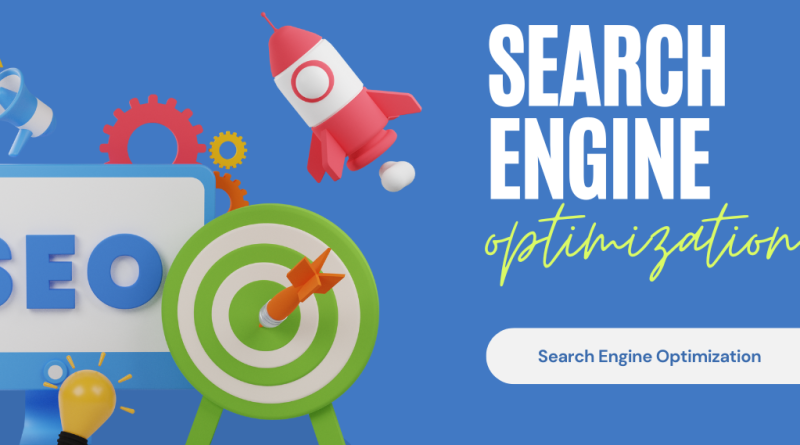Navigating Facts and Myths about Search Engine Optimization
In the digital realm, SEO is a critical tactic. where a company’s online presence may make or destroy it. It holds the key to opening doors for search engine rankings, and increasing traffic. It eventually accomplishes corporate objectives. But within the deluge of information, there’s a mishmash of myths and realities surrounding search engine optimization services that can cause misunderstandings. Anyone navigating the world of SEO must be able to debunk misconceptions and comprehend the realities.
The Foundation of SEO
Enhancing a website’s organic presence on search engine results pages is the fundamental goal of search engine optimization. Increasing a website’s relevance and authority in the eyes of search engines. like Google, Bing, and Yahoo, entails a variety of tactics and procedures.
Breaking Down the Data
High-quality Content Is King: When it comes to SEO, content is king. Content that is useful, interesting, and relevant to users is given priority by search engines. SEO success depends critically on producing excellent content that is suited to the requirements and interests of your target audience.
Keywords are important for search engine optimization (SEO), but context is just as important. Keywords assist search engines in determining how relevant your content is to user searches. Nevertheless, overusing keywords in content—a technique known as “keyword stuffing”—can be more detrimental than beneficial. Rather, concentrate on the organic incorporation of keywords into your writing while preserving readability and context.
User Experience (UX) is Crucial: The importance of UX is growing as search engines give it top priority in their algorithmic rankings. A website’s SEO performance is greatly impacted by elements. Like mobile friendliness, page load speed, and easy navigation. Making sure that users have a smooth and pleasurable experience boosts user engagement and retention in addition to rankings.
Establish Authority: One of the main components of SEO is backlinks. Inbound connections point to your website from other websites. Search engines will see quality backlinks from reliable sites as a sign of authority and trust. Which will raise the possibility that your website will rank higher. However, the focus should be on building real connections and useful content to get relevant backlinks naturally.
Technical Optimization Is Important: Although backlinks and content are essential. Technical SEO factors should also not be disregarded. Search engines can better comprehend and rank your content by optimizing the crawlability. The indexability of your website, metadata, URL structure, and schema markup.
Teasing the Myths Away
SEO Is a One-Time Effort: In contrast to what many people think, SEO is a continuous process. It’s a process that has to be continuously monitored, adjusted, and optimized. As rivals appear, user behavior shifts, and search engine algorithms change, maintaining and improving ranks becomes imperative.
Although meta tags (title tags, meta descriptions, etc.) are important for search engine optimization, they cannot ensure high positions on their own. Although properly structured meta tags can raise user engagement and click-through rates, they are only one component of SEO. Rankings are based primarily on the quality, relevancy, and overall user experience of the content.
Keyword Density Is Crucial: When search engine optimization first emerged, keyword density. The frequency with which a term occurs relative to the word count—played a big role in ranking. But search algorithms are now more intelligent, paying more attention to context and semantic importance than keyword density. Overuse of keywords can harm user experience and result in fines for keyword stuffing.
There is no direct relationship between social media metrics and search engine results. Although social media signals can have an indirect impact on SEO. However, social media may increase the exposure of your business, draw backlinks to your content, and expand its audience—all of which might help your SEO efforts inadvertently.
Paid Advertisements Increase Organic Ranks: Spending money on paid advertisements, like Google Ads, does not affect the ranks of organic searches. While sponsored advertisements might increase exposure and traffic right away, organic results are based on a different set of criteria, such as authority, relevancy, and quality of the content. On the other hand, a comprehensive approach to digital marketing that blends SEO and paid advertising might provide beneficial outcomes.
Conclusion
In summary, separating myths from reality when navigating the SEO world calls for a sharp eye. Acknowledging that SEO performance is mostly based on high-quality content, user experience, and technical optimization enables firms to establish an enduring online presence. Myths like the one-time effort fallacy and the overemphasis on keyword density may be debunked to enable a more knowledgeable and calculated approach to SEO. Businesses may modify their strategy to remain competitive in the digital sphere by comprehending the dynamic changes in search engine algorithms and user behaviors. In the end, SEO is a dynamic process that necessitates ongoing learning, experimenting, and optimization rather than a static formula. By embracing the facts and discarding the myths, organizations can unlock the true potential of SEO to drive organic traffic, enhance brand visibility, and achieve long-term growth in the digital landscape.

